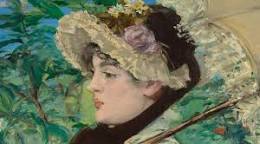The Intricate Beauty of Dot Art
Dot art, also known as pointillism or stippling, is a unique artistic technique that involves creating images using small, distinct dots. This style of art dates back to the 19th century and has since evolved into a popular form of expression for artists around the world.
What sets dot art apart is the meticulous attention to detail required to create intricate and captivating compositions. Artists use various tools such as brushes, pens, or even fingers to apply individual dots of color onto a canvas or surface. The process is time-consuming but yields stunning results that captivate viewers with their depth and texture.
One of the most famous proponents of dot art was Georges Seurat, a French painter who pioneered the pointillist technique in the late 1800s. His masterpiece “A Sunday Afternoon on the Island of La Grande Jatte” is a prime example of how dots can be used to create vibrant and dynamic scenes.
Dot art allows artists to play with light, shadow, and color in unique ways, resulting in visually striking compositions that engage the viewer on multiple levels. The careful placement of dots can create illusions of movement, depth, and form, making each piece a mesmerizing experience for those who observe it.
Contemporary artists continue to explore and push the boundaries of dot art, incorporating modern themes and techniques into this age-old practice. From abstract designs to realistic portraits, dot art offers endless possibilities for creative expression and experimentation.
Whether you’re an artist looking to try something new or an art enthusiast seeking out visually captivating works, dot art is a fascinating style that continues to inspire and intrigue audiences around the globe.
Exploring Dot Art: Techniques, Artists, Terminology, and Its Relation to Pointillism
- What is the dot art technique?
- What artist does dot art?
- What is the dot art called?
- Is dot art pointillism?
What is the dot art technique?
The dot art technique, also known as pointillism or stippling, is a unique artistic method that involves creating images using small, individual dots of color. Artists meticulously apply these dots to a canvas or surface using various tools such as brushes, pens, or fingers. The process requires patience and precision as each dot contributes to the overall composition, resulting in intricate and visually captivating artworks. This technique allows artists to play with light, shadow, and form in innovative ways, creating depth and texture that engage viewers on a profound level. Dot art is a timeless practice that continues to inspire artists and art enthusiasts with its meticulous detail and mesmerizing results.
What artist does dot art?
Dot art, also known as pointillism or stippling, is a technique employed by various artists across different periods and styles. One of the most notable artists associated with dot art is Georges Seurat, a French painter who pioneered the pointillist technique in the late 19th century. His iconic masterpiece “A Sunday Afternoon on the Island of La Grande Jatte” showcases the meticulous use of dots to create a vibrant and dynamic scene. While Seurat is renowned for his contributions to dot art, many contemporary artists also explore this technique, infusing it with modern themes and interpretations to create captivating and innovative artworks.
What is the dot art called?
The artistic technique of creating images using small, distinct dots is commonly referred to as dot art. This style of art is also known as pointillism or stippling, and it involves the meticulous application of individual dots of color to form intricate and visually captivating compositions. Artists use various tools and methods to achieve the desired effect, resulting in artworks that are rich in detail and depth. Dot art has a long history and continues to be a popular form of expression for artists seeking to explore the interplay of light, color, and texture in their creations.
Is dot art pointillism?
Dot art is often associated with pointillism due to their shared technique of using small dots to create images. While there are similarities between the two styles, they are not entirely synonymous. Pointillism specifically refers to the 19th-century art movement pioneered by artists like Georges Seurat and Paul Signac, where tiny dots of pure color are applied in patterns to create vibrant and luminous compositions. On the other hand, dot art is a broader term that encompasses various contemporary artistic practices that involve using dots as a primary element in creating artwork. Both pointillism and dot art showcase the meticulous precision and attention to detail required in working with dots, but they each have their own unique characteristics and interpretations within the realm of visual arts.



